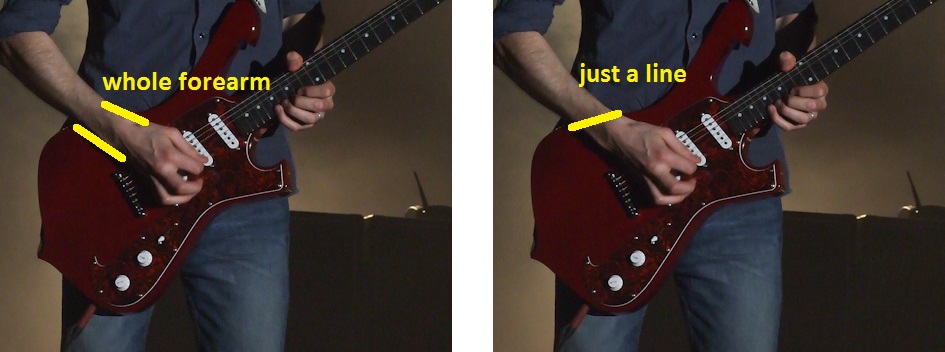For most people, the “whole forearm” approach simply isn’t possible, for purely physical reasons. Anchoring way up there on the body places your hand far away from the top strings, so it becomes harder to reach them. Even if you can reach them, it causes a more extreme angle of edge picking to where you’re hitting them at almost 90 degrees.
Also, keep in mind that the forearm itself has some curvature to it. If you lay your arm flat on a desk, your wrist may contact, but there’s still going to be an air gap of some sort between your arm and the guitar. So I wouldn’t worry too much about this approach - it’s not really “a thing” that players do, even if it may appear that way.
Instead, what I think you’re really asking (and correct me if I’m wrong), is where does the wrist sit, on the body or on the strings? If it sits on the body, you have less air gap. If it sits on the strings, you have more air gap. Both methods work fine, but the body method, again, really only works for the low strings for most people. You can check out the Molly Tuttle interview for a discussion of precisely this topic, where she demonstrates how she shifts the wrist anchor from the body to the strings.
As far as whether you do a completely floating approach or a wrist anchored approach, again, both methods work fine. Molly herself does this. She is a master of anchoring, and can do almost her entire lead playing technique either anchored or floating.
In your case I would try not to worry too much about this. Trying to force a “whole forearm” type of anchor by pressing down against the body is probably somewhat unnatural, and there isn’t much evidence that players really play this way, even if it appears that they do. Instead, learning to have both anchors (body and strings), with gentle pressure, and learning to switch between them, is probably what most players do.


